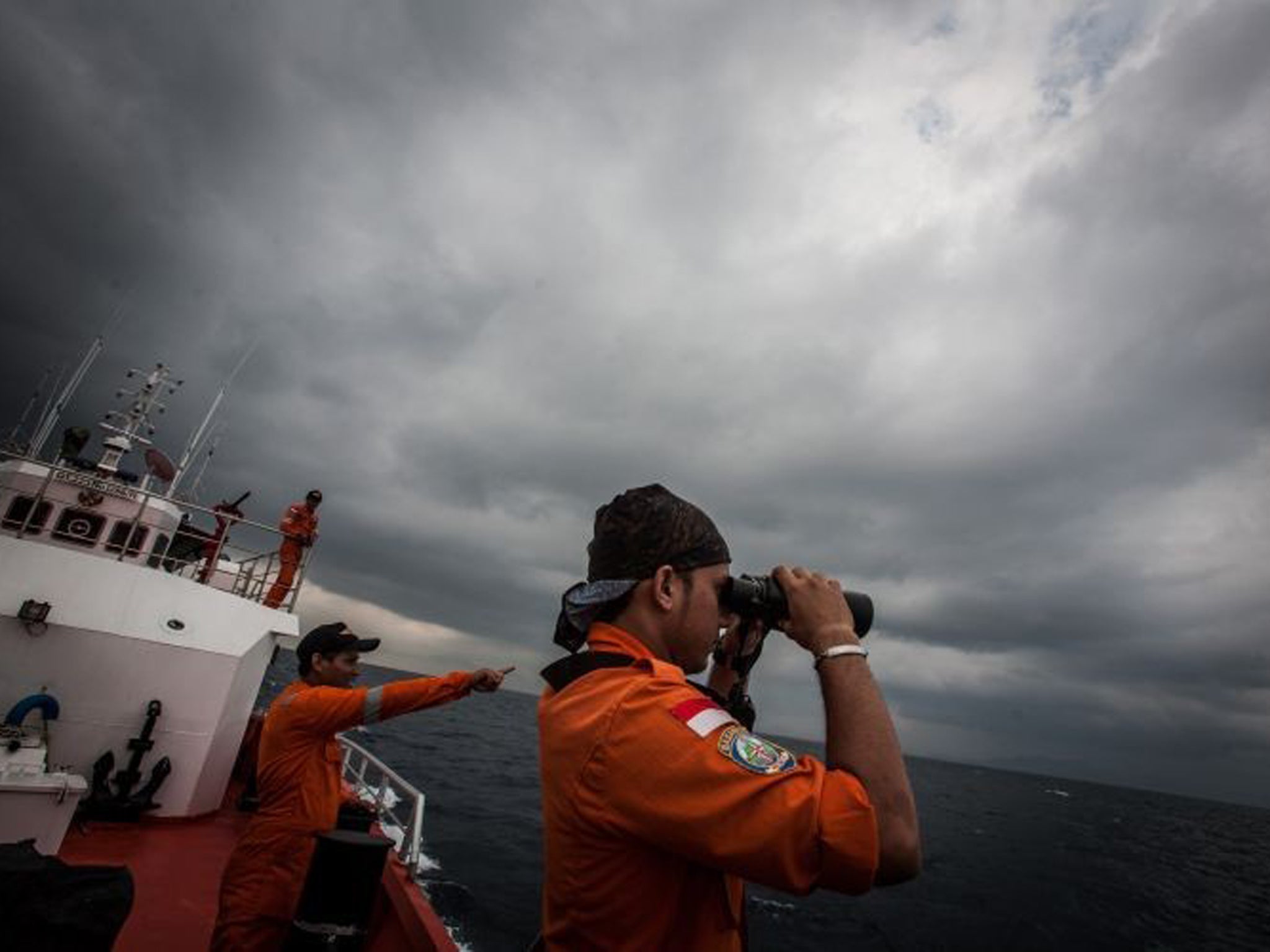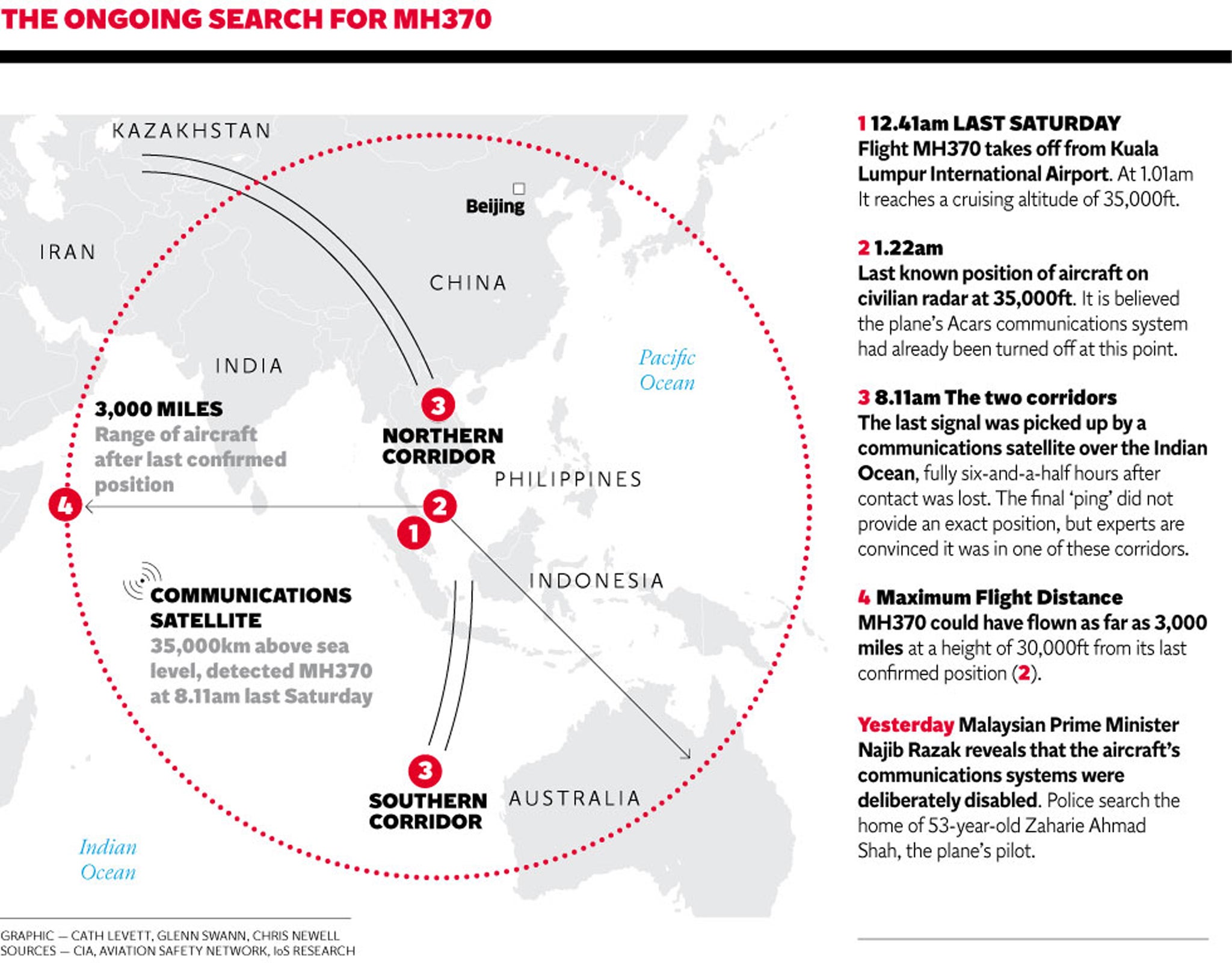Missing Malaysia Airlines Flight MH370 Q&A by Simon Calder: How far could it have travelled? Who was responsible and what would their plans be? And how can a plane just vanish?
One week on Simon Calder runs through what we do – and what we do not – know about the disappearance of the Boeing 777

Your support helps us to tell the story
From reproductive rights to climate change to Big Tech, The Independent is on the ground when the story is developing. Whether it's investigating the financials of Elon Musk's pro-Trump PAC or producing our latest documentary, 'The A Word', which shines a light on the American women fighting for reproductive rights, we know how important it is to parse out the facts from the messaging.
At such a critical moment in US history, we need reporters on the ground. Your donation allows us to keep sending journalists to speak to both sides of the story.
The Independent is trusted by Americans across the entire political spectrum. And unlike many other quality news outlets, we choose not to lock Americans out of our reporting and analysis with paywalls. We believe quality journalism should be available to everyone, paid for by those who can afford it.
Your support makes all the difference.What are we now sure of?
That a Malaysia Airlines Boeing 777, flight number MH370, departed Kuala Lumpur airport at 12.41am local time on Saturday 8 March. There were 227 passengers and 12 crew on board. It flew north-north-east towards its intended destination, Beijing. But before it reached the east coast of Malaysia, the ACARS data-transmission system was disabled, Shortly afterwards the transponder, which provides identification data to ground radar and also handles the aircraft’s “hi-jack alarm,” was switched off. The last voice communication was when Malaysian air-traffic controllers handed over the flight to their Vietnamese counterparts. All normal channels of contact had ended by 2.40am. However, it has now emerged that flight MH370 was deliberately diverted – and the jet was still flying seven-and-a-half-hours after take-off.
How do we know it was still airborne?
One communication channel remained open. Inmarsat operates communications satellites for navigation by shipping and aviation. A satellite over the Indian Ocean sent hourly interrogations to the aircraft. Electronic responses were sent automatically, confirming the aircraft was still in flight. The final satellite contact was at 8.11am, five-and-a-half hours after the jet’s last known position. During that time, the aircraft could have flown 3,000 miles at its normal cruising speed.
A map has been issued using data from the satellite. Does it show the flight path the aircraft may have followed?
No, far from it. It shows only that the extent of possible locations of the aircraft when it sent the last “ping”.
Why 'two corridors'?
The calculation has been made from the distance of the plane from a geo-stationary satellite 22,250 miles above the Indian Ocean, which produces a circle with a radius of about 5,000 miles. Using other data, the possible locations have been narrowed down to a northern arc and a southern arc of this circle. The northern arc runs from northern Thailand via south-west China to southern Kazakhstan. The southern arc extends south from western Java into Indian Ocean, passing about 1,000 miles from the coast of Western Australia.
Does that mean the aircraft is somewhere along those lines?
Not necessarily. The last “ping” was at 8.11am, Malaysian time. Another signal was sent out by satellite one hour later, and no response was received. But in that time, the jet could have travelled up to 500 miles in any direction – subject to having sufficient fuel.
How far could it have travelled?
The maximum range of the Boeing 777ER aircraft type is over 8,000 miles, but the flight will have been carrying only enough fuel for the planned 2,700-mile flight to Beijing plus a contingency for holding and diversions. The “block time” for the scheduled flight is just under six hours. It would be standard practice to add enough fuel for up to two more hours.

Click here for enlarged view of graphic
What runway length would a 777 need to land?
Given that it would have been almost empty of fuel, a mile or so would suffice – less than half the length of Heathrow’s shorter runway.
What was the plan of whoever was directing the aircraft?
That is one of the many baffling aspects of the disappearance. If the person or people responsible wanted to destroy the aircraft, it could simply have been downed at once – or indeed flown into a target such as the Petronas Towers in Kuala Lumpur, formerly the world’s tallest building. So presumably there was a more audacious plan.
How can a plane vanish - are there radar blackspots?
Many travellers have been astonished to learn that there is no global system tracking all aircraft at all times. Over oceans, coverage is very patchy – and over populated areas, if a pilot chooses to disable communications equipment, even a 250-ton aircraft can be elusive.
Who could have been responsible?
One or more of the passengers; one or more of the crew; or even, as the aviation security expert Philip Baum has speculated, one or more stowaways.
There are reports that the pilots’ homes are being searched. Is this unusual?
No. The surprise is that it has not happened sooner. Given that one of the many possibilities was pilot involvement, it would appear routine to check their homes for anything untoward, if only to eliminate a line of enquiry.
What are the key questions the investigators need to address?
If the pilots were acting under duress, why did they not activate an emergency distress signal on the flight deck when events began? Why were the crew not challenged about the disabled ACARS system? And, as events unfolded, were any mobile phone calls made or SMS messages sent by passengers? If the answer to the last question is “no”, then one conclusion may be that the aircraft was well out to sea.
Join our commenting forum
Join thought-provoking conversations, follow other Independent readers and see their replies
Comments